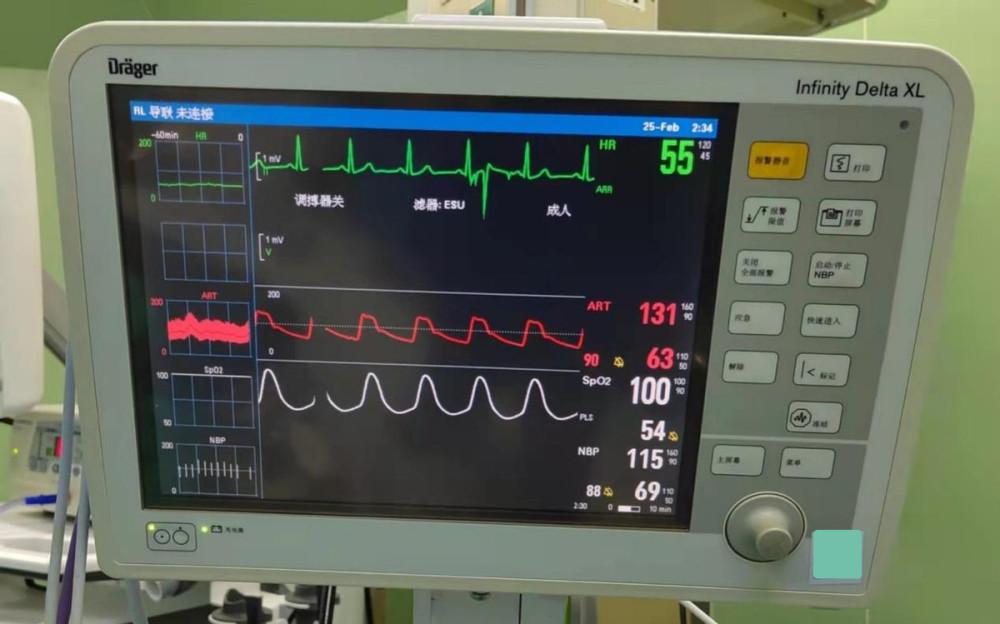Author: Chen Long Gao Xinyue
Unit: Department of Anesthesiology, Punan Hospital, Pudong New Area, Shanghai
In the film and television drama, the anxious family members in the corridor outside the operating room door, the doctors who are concentrating on the operation on the operating table, and the ticking sound accompanied by the beating numbers on the monitor echo... Are these stereotyped surgical plots familiar? So who is watching the numbers on the monitor?

Anesthesiologists, of course, are observing and monitoring.
Another person asked, doesn't anesthesia make the patient feel painless with a "single injection"? The anesthesiologist only needs to sit next to the operating table, what else needs to be monitored?
In fact, the anesthesiologist should be carefully evaluated before the "injection" that is, the induction of anesthesia, and when the anesthesia induction is just "injected", it is necessary to closely monitor and maintain the normal vital signs of the patient, to effectively prevent serious complications in the operation, to ensure the safety of the operation, and after the "injection" to ensure that the patient wakes up safely, which depends on the monitoring of the anesthesiologist to complete.
There are many methods related to monitoring, ancient "look, smell, ask, cut", now there are "look, touch, knock, listen", modern monitoring instruments provide more and more data, more and more accurate and real-time dynamics, the support for the technical judgment ability of anesthesiologists is also getting stronger and stronger. However, the data provided by the instrument is only part of the monitoring of anesthesiologists, and many monitoring projects need to be observed, listened, judged, and discovered with the eyes, ears, hands, and hearts. A qualified and excellent anesthesiologist, through his own observation and monitoring data, can grasp the patient's physiological, pharmacological, biochemical and pathophysiological changes at any time, and implement beautiful precision anesthesia and near-perfect comfort medical technology for the patient, so modern monitoring instruments cannot replace the work of anesthesiologists.
With the development of medicine and the advancement of ideas, monitoring programs that were not paid attention to in the past have received more and more attention from anesthesiologists, such as body temperature monitoring. People are thermostatic animals, once the body temperature balance is broken, it will increase the risk of adverse physiological effects of the body, and the body temperature of patients under anesthesia is more likely to break the phenomenon of body temperature balance, so strengthening the temperature monitoring during the anesthesia period is very important for preventing and treating complications related to body temperature. Another example is the emphasis on eye protection, where many people sleep with their eyes open and will develop exposed keratitis after surgery, which requires careful observation by an anesthesiologist to avoid.
These increasing monitoring contents are essential for anesthesiologists to assess patient anesthesia and surgical safety, but there are many data that are not on the monitor and require anesthesiologists to evaluate with certain experience or auxiliary tests, such as:
1. By observing the patient's skin, mucous membrane, nail bed and surgical field blood, it is determined whether the patient has hypoxemia and allergic reactions.
2. Auscultation of the lungs to determine whether the patient has complications such as pulmonary edema and atelectasis. Observe the patient's chest and abdomen fluctuations, ventilator airbag activity, etc. to understand the presence or absence of breathing, the number of breaths and the depth of breathing, determine the condition of the patient's removal of the endotracheal catheter, and observe the type of breathing, and determine whether the awakened patient can be sent back to the ward.
3. Monitoring urine output can reflect the renal perfusion state to a certain extent, indirectly reflect the perfusion of internal organs, and guide fluid therapy.
4. Dynamic monitoring activates coagulation time (ACT) to reflect the coagulation function of the human body, targeted supplementary coagulation factors.
5. Monitor blood gas analysis, which is commonly used to determine whether the patient has acid-base imbalance, electrolyte disorder and degree of hypoxia.
6. Thromboelastogram (TEG), which is a recently more advanced indicator of monitoring and evaluating the patient's coagulation status, can accurately provide the patient's coagulation profile, and can accurately perform intraoperative component transfusion.
7. Esophageal echocardiography (TEE), which can monitor: (1) those who have unexplained hypotension and hypoxemia during surgery and are difficult to correct. (2) Hemodynamic monitoring, observation of preload, afterload, myocardial contraction and diastolic function. (3) Evaluate the effect of surgical treatment of intraoperative patients.
From the introduction of the above articles, we can get such a conclusion: the monitoring project of anesthesiologists is far more than the data on the monitor, and only the anesthesiologists can flexibly use different monitoring methods to obtain correct clinical judgment, better and more perfectly maintain the stability of patients' vital signs, so that patients can wake up smoothly and return to normal life as soon as possible.
【Warm tips】Point to pay attention, here is a lot of professional medical science, for you to reveal the secret of surgical anesthesia those things ~ ~